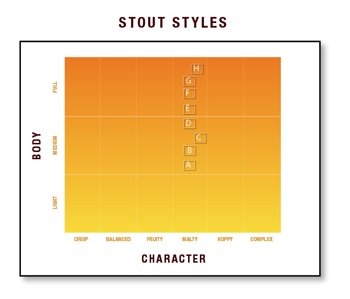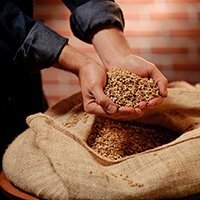From the early 1700s, Porter, and therefore Strong Porter or Stout, evolved in flavor through various iterations of ingredients, brewing methods and strength. Modern research of early 1800s English beer recipes reveals that in many commercial breweries the recipe for their Porter and Strong Porter or Brown Stout was exactly the same. The difference in the beers was from drawing off more water from the malt for Stouts: The less water used for mashing Stouts, the stronger the beer. Porter and Stout were the same, except Stout was stronger.
By the late 1800s some English breweries’ Stout recipes began changing and a further distinction to Porters emerged: New Stouts became notably sweeter in taste. The use of more brown malt and less black malt, and the addition of other fermentable sugars, also lessened the roasted flavor and increased the alcohol strength. In the early 1900s a new type of Stout emerged called Milk Stout (or Cream Stout or Sweet Stout), which added non-fermenting lactose sugar that bolstered body and sweetness. This represented a gradual change in Stouts, as consumer preferences in England changed with the growing popularity of English Mild Ale and other beers.
APPEARANCE
Color: Medium brown to black
Clarity: Most brands opaque, some clear
Head: Creamy, often long-lasting, leaving lace on the glass
AROMA AND TASTE
Malts: Caramel-sweet, chocolaty, toffee, coffee, toasty, roasty or burnt
Hops: Supportive bitterness in Irish and English styles; aromatic and bold in American styles
Yeast: Estery notes of various dark fruits, including plum and fig
Other: Licorice, char
MOUTH-FEEL
Consistency: Smooth, velvety, silky, chew
Carbonation: Delicate to round
Body: Medium to full
Finish: Long to everlasting, dry to wet




